Body Mapping
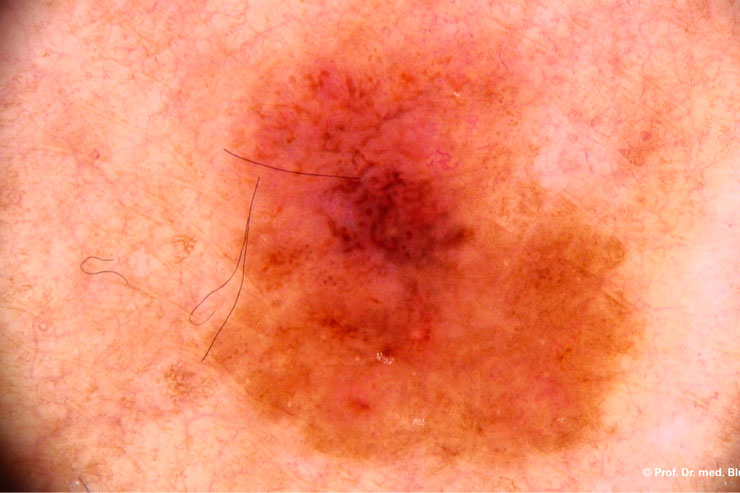
There are three main types of skin cancer: basal cell carcinoma, squamous cell carcinoma and melanoma, named after the types of skin cell they occur in (basal cells, squamous cells and melanocytes). The most severe of these types of skin cancer is the melanoma, which can grow very quickly and become life-threatening in as little as six weeks if untreated (which also increases its chances of spreading to other parts of the body). Basal cell and squamous cell carcinomas are often grouped together and called 'common' skin cancers. Although slower-growing and not as aggressive as melanomas, they too can spread to other parts of the body if left untreated.
Skin cancers are usually noticeable. They often look different to the surrounding area of skin, and may have recently appeared (or can be recognised if an existing area has changed shape, size or colour.) It is always worthwhile having a suspect area checked out as soon as possible.
Basal Cell Carcinoma
Basal cell carcinomas are the least dangerous but most commonly-diagnosed form of skin cancer. They grow slower than skin cancers such as melanomas, and are usually found on the hands, head, neck and upper torso (areas that spend the most time exposed to the sun). Basal cell carcinomas are often dry, hard and scaly areas that are noticeably red (often with pearly nodules). These lesions (which can also be brown, blue or black) are mostly found in nodular basal cell carcinomas. Basal cell carcinomas often looks like a sore that does not completely heal (which occurs when the carcinoma ulcerates as it grows) and as a result of their slower rate of growth are the most treatable form of skin cancer.
 |
 |
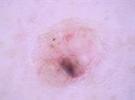 |
Squamous Cell Carcinoma
Like basal cell carcinomas, squamous cell carcinomas are not as dangerous as melanomas but may spread to other parts of the body if not treated. They grow over a period of months, appearing on areas of skin most exposed to sunlight (such as the face, lips, neck and back). While they are also similar looking to basal cell carcinomas – often red and scaly, ulcerated or crusty – they are more likely to spread than basal cell carcinoma. The cancerous lesions may also appear any number of ways, and blood vessels are often present at the edge of the lesion.
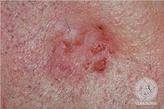 |
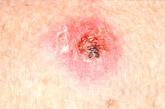 |
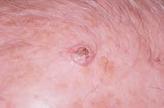 |
Melanoma
A melanoma is a cancerous growth of melanocytes. This means melanomas can appear anywhere in the body where melanocytes are present, such as the digestive tract, the eyes, the lymph nodes and the meninges, though they most commonly occur in the skin. Melanomas are categorised by their appearance (to the naked eye or microscopically) or by their location, and come in several forms:
• Superficial spreading melanomas are one of the most commonly-diagnosed forms of melanoma and can develop in any region of the skin. They are usually raised around the edges and can be any number of colours, from red and pink, to brown, grey or blue.
• Acral lentiginous lesions usually develop on the hands and feet and are characterised by flat tumours that are usually dark in colour – brown or black.
• Lentigo maligna melanomas are mostly found on the face and are recognisable by an irregular border. They are usually tan to brown in colour.
• Nodular melanomas Nodular melanomas are highly dangerous and looks different to common melanomas. Their appearance is more raised and they are often brown, red or pink in colour. Nodular melanomas can be life-threatening if not detected and removed promptly.
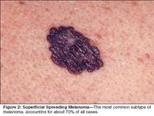 |
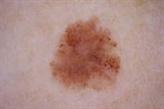 |
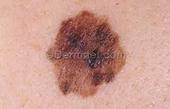 |
